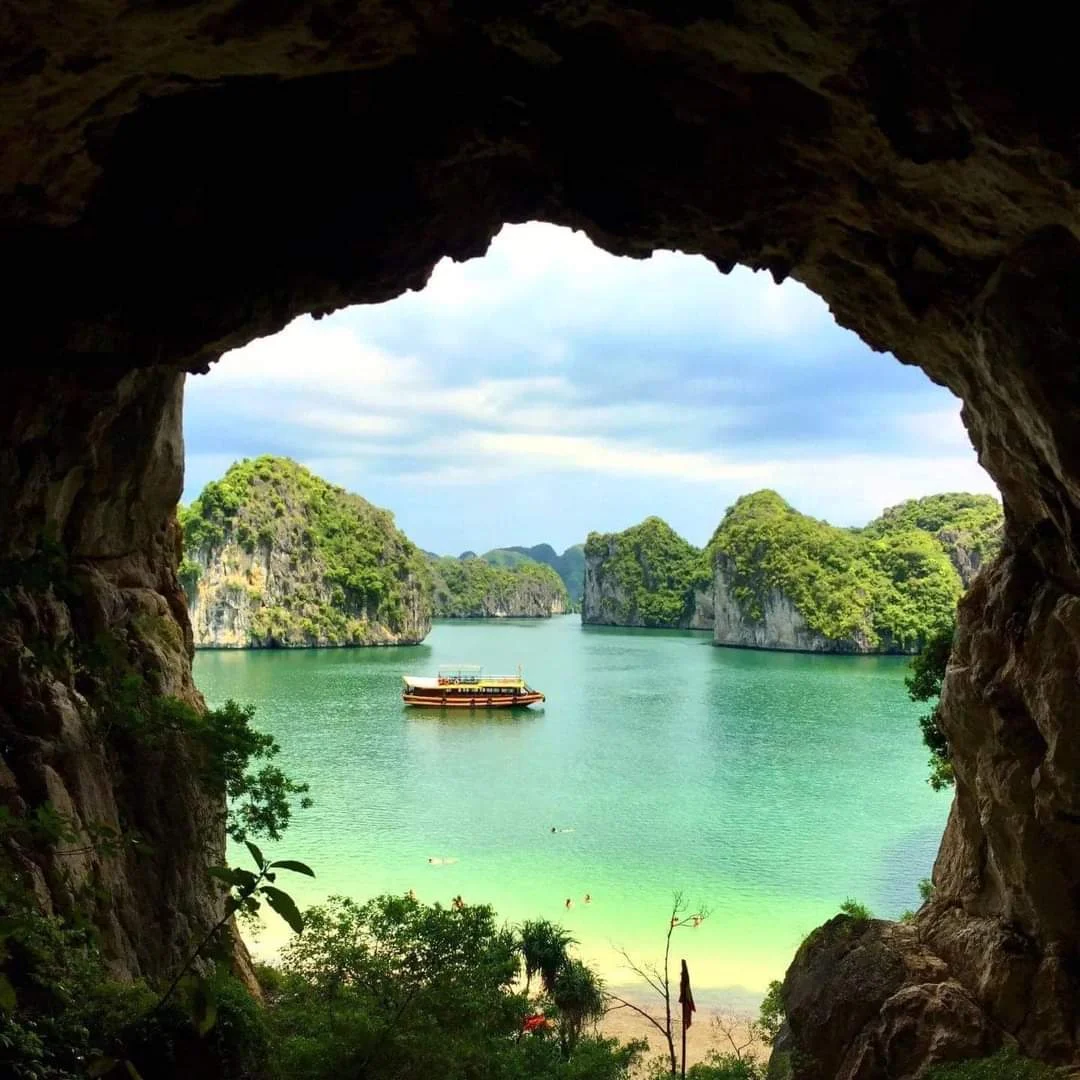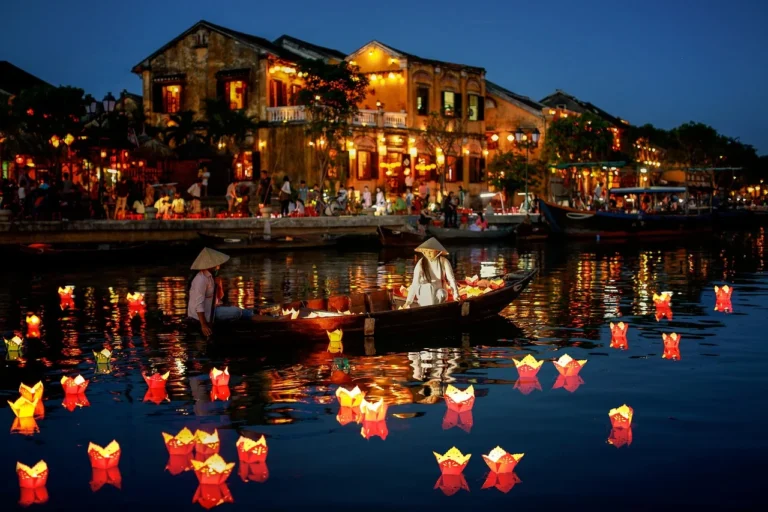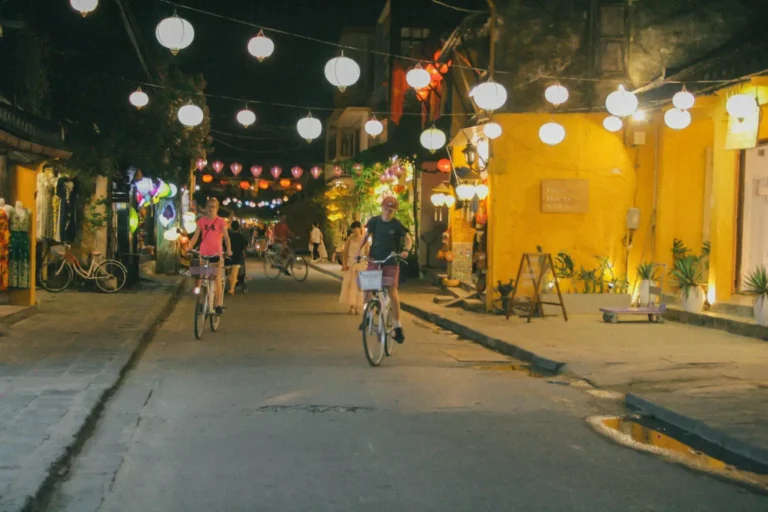Table of Contents
A Journey Through Vibrant Vietnam
To visit Vietnam is to step into a world of vivid colors and intoxicating energy. In the North, the misty peaks of Sapa cradle terraced rice fields like golden stairways to the sky, while the ancient streets of Hanoi hum with the clatter of coffee cups and motorbike horns. The Central region boasts lantern-lit Hội An, glowing with old-world charm, and the windswept dunes of Mũi Né, painting a surreal desert by the sea.
Further south, the lush Mekong Delta pulses with life, where floating markets drift along winding rivers, and mangrove forests whisper with the calls of hidden wildlife. Beyond the waterways, Ho Chi Minh City rises in striking contrast—a metropolis of gleaming skyscrapers, endless energy, and streets that never sleep. Vietnam is dynamic, vibrant, and colorful, boasting a rich history and culture, friendly people, delicious cuisine, easy access, affordability, and safety. It welcomes travelers from all over the world with open arms.
In this country, beauty is not just seen but felt—in the whisper of the wind through bamboo groves, the crash of waves against rocky shores, and the laughter of locals sharing a meal under the stars. There is no question why tourism in Vietnam continues to grow. In January 2025, Vietnam attracted its highest-ever number of monthly visitors, with numbers expected to rise even further.
The Natural Beauty of Ha Long Bay
Vietnam holds the second-highest number of world heritage sites in Southeast Asia, including five cultural, two natural, and one mixed site. Among them, Ha Long Bay—known as the Land of the Descending Dragons—was recognized by UNESCO as Vietnam’s first Natural Heritage Site in 1994. It is world-famous, drawing travelers from across the globe eager to explore its raw beauty and connect with nature.
Ha Long Bay—with its limestone karsts and jade waters—is a place where legends rise from the sea and time seems to stand still. But beneath this beauty, a silent crisis unfolds. The waters that once shimmered like glass now struggle against the weight of pollution, a stark reminder of the delicate balance between preservation and progress.
Unfortunately, Ha Long Bay pollution has become a growing concern that threatens the integrity of this natural wonder.
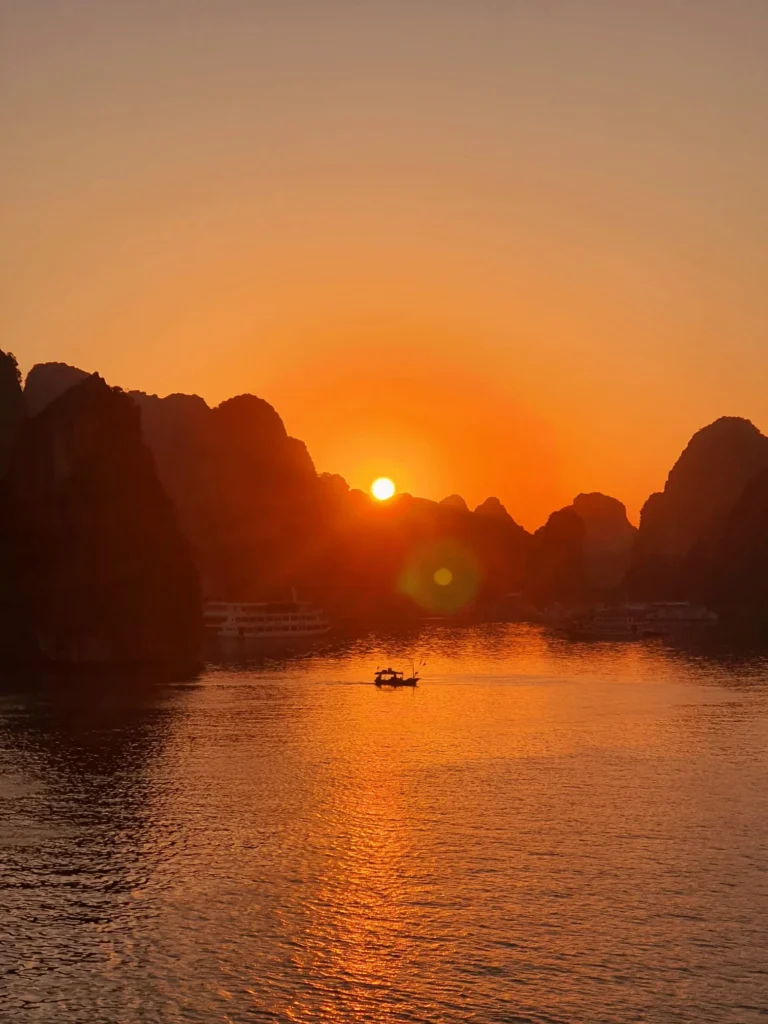
Addressing Ha Long Bay pollution is essential for maintaining its status as a UNESCO World Heritage site.
Pollution: The Hidden Crisis Beneath the Surface
Efforts to combat Ha Long Bay pollution are crucial for future generations to experience its beauty.
Future generations deserve to experience Ha Long Bay free from the impacts of pollution.
In 2023, UNESCO added Ha Long Bay—Cat Ba Archipelago to its list, making it Vietnam’s first inter-provincial World Natural Heritage site. The Cat Ba Archipelago, part of Hai Phong City, neighbors Ha Long in Quang Ninh Province, making it a natural choice for travelers exploring northern Vietnam.
According to UNESCO, a World Heritage Site must contain ‘superlative natural phenomena or areas of exceptional natural beauty and aesthetic importance.’ Ha Long Bay—Cat Ba undeniably fits this description. Bathing, kayaking, or boating beneath the towering limestone karsts, you feel small—like a whisper in the presence of giants. The sheer cliffs, draped in lush greenery, rise dramatically from emerald waters. The air is fresh, thick with the scent of salt and earth. It makes you believe in magic.
If you can see past the blankets of styrofoam and plastic, that is…
Local communities are increasingly aware of the need to tackle Ha Long Bay pollution to protect their environment.
Raising awareness about Ha Long Bay pollution can galvanize support for restoration efforts.

Engaging in activities that raise awareness about Ha Long Bay pollution can inspire more sustainable tourism practices.
A Legacy of Plastic and Waste
An itinerary around Ha Long Bay and Cat Ba almost certainly involves floating through its waters—on a speedboat, a cruise liner, a yacht, a ferry, or a junk boat. From luxury to budget travel, there is something for everyone. Tourists can spend the night on a cruise, kayak to hidden beaches, or explore the famous Cat Ba Island. On land, Quang Ninh Province offers pristine forests, rivers, mountains, and waterfalls. Biking through winding valleys or camping under the stars, nature lovers have much to marvel at.
Conversations around Ha Long Bay pollution can lead to innovative solutions and community-driven change.
Exploring the impacts of Ha Long Bay pollution is essential for developing comprehensive environmental policies.
Addressing the root causes of Ha Long Bay pollution will require a collaborative effort from all stakeholders.
Recently, while standing on a beach in Cat Ba, a tourist commented on how much they had enjoyed their trip but was shocked by the amount of trash and Ha Long Bay Pollution. Floating debris mars the bay’s natural splendor, a stark contrast to the picturesque images in travel blogs. The air, thick with smog from coal-fired power plants, industrial emissions, vehicle exhaust, and waste burning, casts a haze over the region. The waters, murky with oil from fishing boats, cruises, oil rigs, and cargo ships, tell a grim tale. And the trash—everywhere.
Ha Long Bay pollution is a reminder of the urgent need for sustainable practices in tourism and industry.
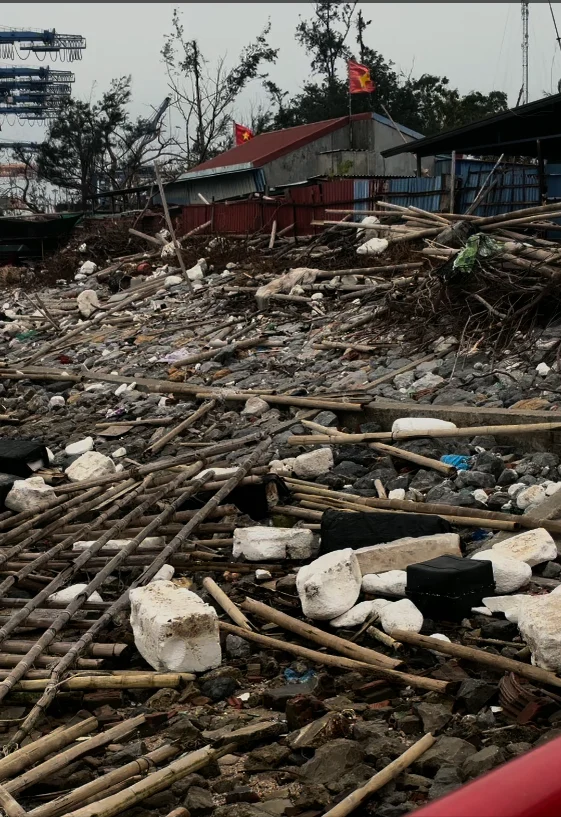
By acknowledging Ha Long Bay pollution, we can better appreciate the efforts needed for preservation.
The Impact of Styrofoam and Waste Management Issues
Individuals can contribute to reducing Ha Long Bay pollution through conscious choices in their daily lives.
A 2019 research report analyzing TripAdvisor reviews of Ha Long Bay revealed recurring themes: beautiful scenery, excellent tours, and environmental concerns—words like “dirty,” “plastic,” and “rubbish” appeared frequently.
Every effort counts in the fight against Ha Long Bay pollution, and collective action can lead to meaningful change.
Understanding the sources of Ha Long Bay pollution can help us develop better strategies for waste management.
This isn’t just Ha Long Bay’s burden—it’s a national and global issue. Vietnam ranks among the top 5 plastic polluters of the world’s oceans. With Hanoi being named the world’s most polluted city in January 2025, according to Reuters.com, and domestic waste polluting rivers and fields daily, the environmental toll is heavy.
Despite local clean-up initiatives and some green businesses, the root causes—weak waste management, lack of infrastructure, and widespread plastic dependence—persist.
Vietnam’s Resilience and the Path Forward
Vietnamese people already have a deep connection to nature. Greenery thrives in every available space, from urban gardens to lush tree-lined streets. But somewhere along the way, humanity began treating nature as something separate—something to dominate rather than coexist with. But we are nature. When we care for our environment, we care for ourselves and future generations.
Vietnamese resilience is unmatched. Time and again, communities have come together to rebuild after disasters like Typhoon Yagi in 2024, which displaced entire fishing villages and left mountains of styrofoam in its wake. That same strength and unity can be channeled into environmental restoration.
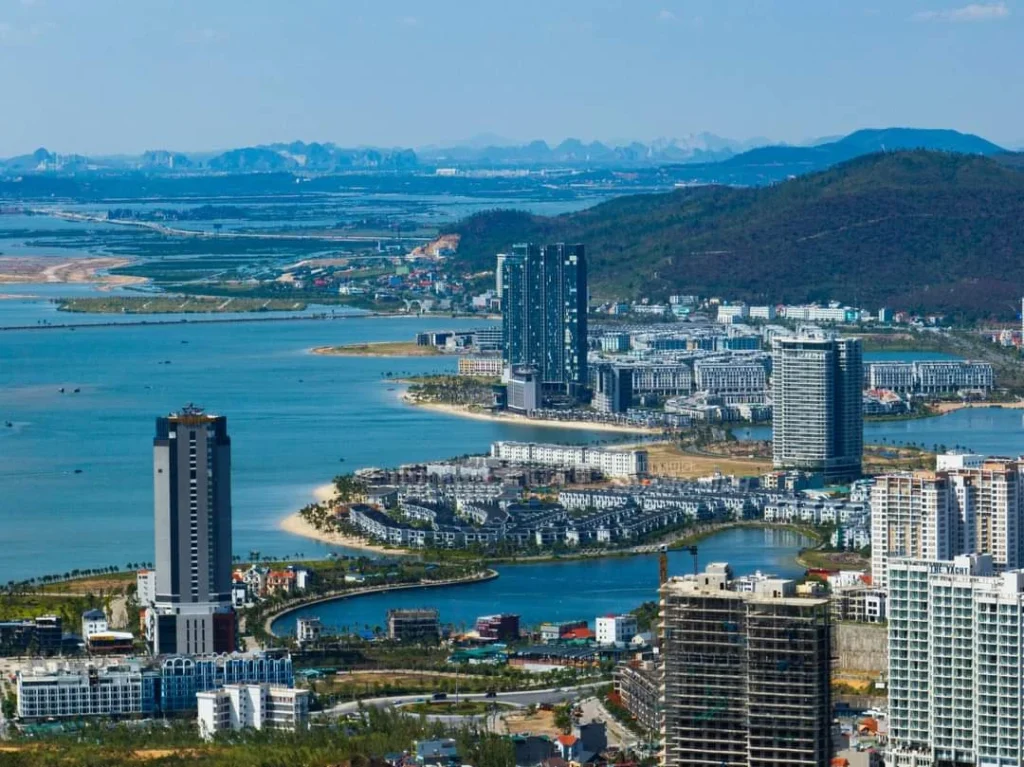
What Can We Do?
Individuals: Everyday Actions for Change
- Reduce plastic use: Carry reusable bags, bottles, and straws.
- Dispose of waste responsibly: Recycle and support low-waste businesses.
- Clean up litter: Even small actions make a difference.
- Choose sustainable transport: Walking, cycling, or public transit.
- Spread awareness: Talk about Ha Long Bay pollution and encourage action.
Businesses: Leading by Example
- Ban single-use plastics.
- Implement recycling programs.
- Support eco-tourism and responsible travel.
Local Authorities: Enforcing Sustainable Policies
As a community, we must prioritize the fight against Ha Long Bay pollution to protect our natural heritage.
- Provide more public trash bins.
- Improve waste collection and recycling.
- End open trash burning.
- Regulate overdevelopment.
- Enforce stricter industrial pollution controls.
Ha Long Bay pollution must be addressed through comprehensive policies that involve all stakeholders.
We can all play a role in reducing Ha Long Bay pollution and ensuring its beauty endures.
A Shared Responsibility
Ha Long Bay’s pollution crisis is not just a local issue—it reflects a global challenge. Real change requires collective action from individuals, businesses, and local authorities. If we continue to exploit nature without accountability, we risk losing one of Vietnam’s greatest treasures.
Nature is not separate from us; it is part of us. Protecting Ha Long Bay means securing a sustainable future—for Vietnam, for travelers, and for the planet.

Combatting Ha Long Bay pollution requires a unified approach that includes education and community engagement.

